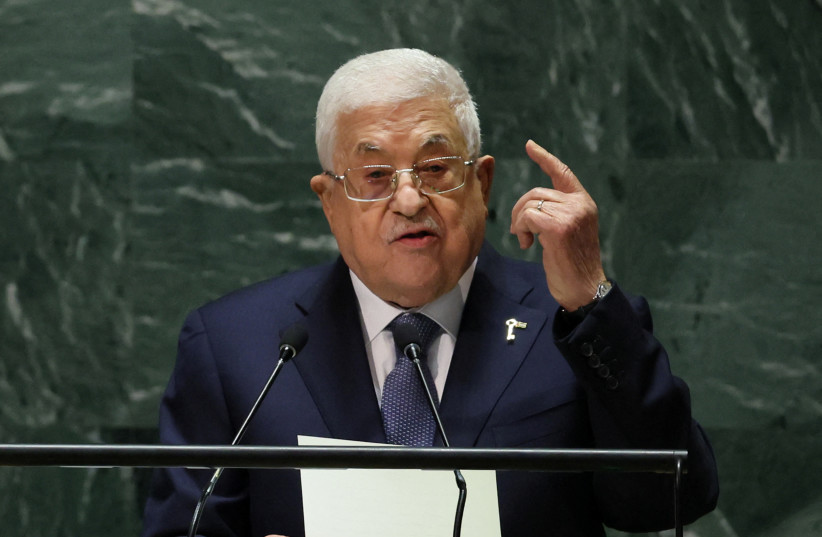The Israeli occupation of the Palestinian Arabs ended 30 years ago. Don’t take my word for it. Just ask the Palestinian Authority.
The PA recently submitted a request to UNESCO to recognize the city of Jericho as a “Palestinian heritage site.” In its description of the history of the region, the PA’s request refers to “the time of Israeli Occupation (1967-1994).” Thus, the PA has acknowledged, in writing, that Israel’s occupation there ended in 1994.
The same phrase appears in another PA-UN document. In 2008, the PA asked the United Nations to help improve its tax-collecting policies. After a two-year study, the PA’s Finance Ministry and the United Nations Development Program published a report titled “Diagnostic Study of Property Tax in the Occupied Palestinian Territory.”
The report surveyed the history of tax collection in the area, so it was forced to acknowledge the changes between the years that Israel occupied Palestinian Arab cities and the years after the occupation ended. Thus, on page 49, we find Section 6.1, which is titled “Taxes in the occupied Palestinian territory – Israeli Occupation (1967-1994).”
(Thanks to the noted legal scholar Eugene Kontorovich and the “Elder of Ziyyon” blog for finding these documents.)


Why does this matter? Because there is an entire cottage industry of pundits, politicians, and advocacy groups whose agenda depends upon claiming that there is an “Israeli occupation.”
They need to be able to point an accusing finger at Israel, in order to justify their demand for Palestinian statehood. They need to be able to portray Israel as an oppressor in order to excuse Palestinian Arab violence. They need to pretend Israel still occupies the Palestinians, in order to make it seem as if Israel is to blame for their lack of elections and civil rights.
Of course, anybody who visits any city in the PA-governed territories, can see with their own eyes that there are no Israeli soldiers. No Israeli military governor. No Israeli military administration. Prime Minister Yitzhak Rabin withdrew them all, three decades ago.
Rabin and the West Bank
WHEN RABIN was elected in 1992, he faced a serious dilemma. On the one hand, he recognized that allowing the Palestinian Arabs to establish a sovereign state in Judea-Samaria-Gaza would pose a grave threat to Israel’s existence. Israel would be just nine miles wide in its middle, next door to a state run by terrorists and dictators.
A Palestinian terrorist armed with a shoulder-fired missile, standing inside the sovereign borders of “Palestine,” would be able to shoot down a plane taking off from Ben-Gurion Airport. No sane country would accept such a nightmarish existence.
On the other hand, Rabin was uncomfortable having Israel continue to rule over the Palestinian Arabs in those territories. So, he devised the Oslo Accords, which ended Israel’s occupation of the Palestinians and gave them something close to statehood, but without endangering Israel’s existence.
In 1994, Rabin withdrew from the city of Jericho and almost all of Gaza. Then, in 1995, Rabin withdrew from all the other cities in Judea-Samaria where 98% of the Palestinians reside; and Ariel Sharon later withdrew from the rest of Gaza.
Thanks to Rabin’s solution, it is the Palestinian Authority, not Israel, that occupies 98% of the Palestinian Arabs. The streets of their cities are policed by the Palestinian security forces. Palestinian principals and teachers run the schools. The courts have Palestinian judges. When elections are held (although it has been a while), the candidates and the voters are all Palestinians. Pretty much the only thing the Palestinian Authority can’t do is import tanks, planes, Iranian “volunteers,” or North Korean missiles.
Thanks to Rabin’s solution, today’s status quo ensures Israel’s Jewish majority, retains Israel’s defensible borders, and guarantees all faiths free access to their religious sites. At the same time, it allows nearly all of the Palestinian Arabs to live under their own government. They live in an entity that is close to statehood in every respect except those few aspects that would endanger Israel’s existence.
Of course, this situation is far from ideal. But it’s better than being nine miles wide.
The writer is president of the Religious Zionists of America (RZA). He is the father of Alisa Flatow, who was murdered in an Iranian-sponsored Palestinian terrorist attack in 1995 and the author of A Father’s Story: My Fight for Justice Against Iranian Terror. Note: The RZA is not affiliated with any American or Israeli political party.
